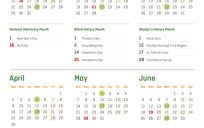Briggsy and I have been chatting to some good folk across the pond recently about running a Govcamp-style event, and how unconferences work. Some of their senior folk are nervous, understandably, about trying what seems like quite a radical approach. What if the conversation veers off course? What if the sessions go round in circles? What if we don’t get the right kind of sessions proposed?
Here’s some thoughts I just emailed over, which I thought I’d post here and see if anyone else can contribute more good ideas. Without destroying the value of an unconference-style event, how can a bit of a structure help things along? Here’s what I came up with:
I think we all have the fear as the unconference kicks off that we’ll all end up just sitting round uncomfortably in silence… though happily that never happens! The other risk is that it’s structured too much, and people switch in to passive-recipient mode (as per a traditional conference) rather than actively engaging and taking responsibility for making sessions useful.
If you want to impose some light structure, here’s a few ideas:
– kick off with show+tell, maybe an hour or so which is a succession of short talks, no more than 5-10 minutes each, to provide some stimulus for the rest of the event and enable speakers to pitch a longer session later in the agenda and get people interested in the topic. Then follow that up with an Open Space element to explore those topics in more depth, more interactively
– alternatively, define some broad ‘strands’ to the event, maybe theming the discussion according to room: ‘In Room 1, we’ll be talking about microformats, in Room 2, we’re looking at RDF, in Room 3: business strategies, and in Room 4, user experience’ – explain people can come and go between rooms/strands, but at least that way people have a sense of what to expect
– tee up some people in advance, so they don’t turn up cold. It’s fine if 50-70% of the audience just turn up, but you want a hard core of perhaps 20% at least to be actively thinking about what kind of sessions they could run, and maybe prep some material in PowerPoint or an online demo to show people. If they’re planning it in advance (do you have a conference forum/blog/wiki set up?) then they’re more likely to want to actively pitch in on the day and make it a success
Finally, I’d say remember the way the event will be judged by the participants: sitting and listening to people, however clever, still doesn’t leave you feeling as good as having an active conversation with others about stuff you’re interested in. That could be three people in a corridor or 50 people in a seminar room – the fact is, by giving people the freedom to define what useful topics are for them, they’re more likely to feel positive about the event. And some of the greatest value may come from conversations in the margins of the official sessions – which is kind of infuriating if you’re the organiser, I know.
What else could you try?





At CityCamp Raleigh, the format was:
-Day 1 (1/2 day) – was structured talks actually
-Day 2 (full day) – was standard unconference
Between Day 1 and 2 there was a GovUp (GL Meetup event) where people met each other so I felt they had some comfort w/ each other which helped in morning
Generally I do like the mix of structure and unstructure…